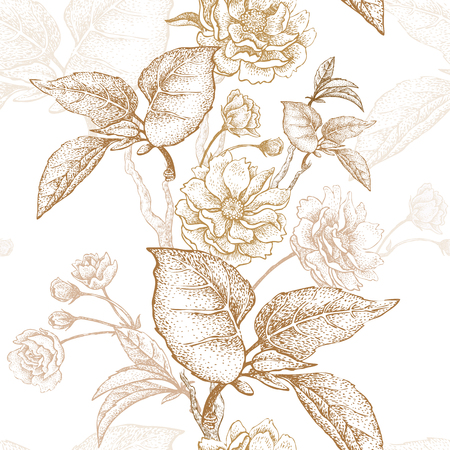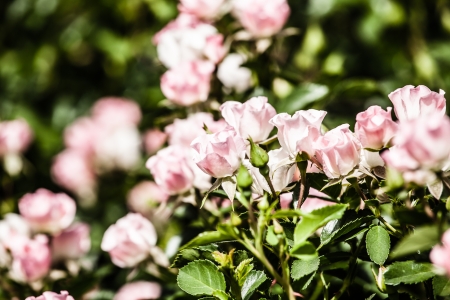1. Introduction to Container Roses
In the heart of British towns and cities, where outdoor space is often at a premium, the art of cultivating roses in containers has flourished as both a practical solution and a cherished pastime. Growing roses in pots or planters offers immense flexibility for those with limited garden space, balconies, or patios—making this classic bloom accessible to everyone from city dwellers to suburban homeowners. The popularity of container-grown roses across the UK is rooted in their ability to bring vibrant colour, fragrance, and elegance to even the smallest of spaces. Beyond mere aesthetics, container gardening allows enthusiasts to control soil quality, position plants for optimal sunlight, and more easily manage pests and diseases—essential considerations in the ever-changing British climate. Whether you are an experienced gardener or a novice eager to embrace horticulture on a modest scale, exploring the world of container roses unlocks new possibilities for creating beautiful, thriving displays that reflect the unique charm of British urban living.
Choosing the Right Rose Varieties
When growing roses in containers within the UK, selecting the appropriate varieties is crucial for both success and satisfaction. The British climate, with its mild summers and cool, damp winters, means that not all roses will thrive equally well in pots. For limited spaces such as patios, balconies, and small gardens, compact cultivars and those bred specifically for containers are ideal. Below, we examine the best types of roses suited to container growth in British conditions, highlighting both traditional favourites and modern introductions.
Recommended Rose Types for Container Growing
The following table provides a concise overview of rose varieties that perform admirably in UK climates when grown in containers. These selections balance beauty, hardiness, and ease of care.
| Rose Type | Notable Cultivars | Key Features | Typical Height |
|---|---|---|---|
| Patio Roses | Sweet Dream, Lydia | Compact growth, prolific blooms, ideal for small pots | 30-50cm |
| Miniature Roses | Baby Masquerade, Bees Knees | Tiny flowers and foliage, suitable for window boxes and table displays | 15-30cm |
| Floribunda Roses | Champagne Moment, Blue For You | Clustered blooms, repeat flowering, good disease resistance | 60-90cm |
| English Shrub Roses (David Austin) | Gertrude Jekyll, The Lady Gardener | Classic British scents, lush form, well-suited to larger containers | 80-120cm |
| Ground Cover Roses | Flower Carpet Pink, Kent | Disease resistant, spreading habit, easy maintenance | 40-60cm (spread more than height) |
Selecting for Performance and Appearance
British gardeners often favour classic varieties renowned for fragrance and repeat blooming. David Austin’s English Roses remain a top choice due to their reliability in our weather conditions. For those seeking colour variation or contemporary flair, floribundas and patio roses offer a wide palette while fitting neatly into smaller spaces.
Cultivar Considerations for UK Climates
- Disease Resistance: Opt for varieties with strong resistance to black spot and mildew—common issues in damp British summers.
- Repeat Flowering: Look for cultivars that bloom multiple times through the season to maximise impact in confined areas.
- Growth Habit: Choose upright or bushy forms rather than sprawling types to maintain tidy displays on patios or balconies.
- Scent: Many British gardeners cherish fragrant roses; select accordingly if scent is important to you.
A Note on Rootstock Selection
If purchasing bare-root roses or young plants from specialist nurseries, enquire about rootstock suited to container culture—Patio or Mini Stem rootstocks generally ensure compactness and vigour without overwhelming your space.

3. Selecting and Preparing Containers
When cultivating roses in containers within British gardens, careful consideration of container selection is crucial for ensuring healthy growth and vibrant blooms. The unique challenges posed by the UK’s variable climate and often limited outdoor space require thoughtful choices regarding size, material, and drainage.
Container Size: Allowing Roots to Flourish
Roses develop extensive root systems, making container size a primary concern. For British conditions, choose pots with a minimum diameter and depth of 40cm to provide ample space for root development. This not only supports robust growth but also helps prevent the soil from drying out too quickly during warm spells—a common issue in smaller containers.
Material Matters: Durability and Insulation
The material of your chosen container can significantly impact your rose’s health throughout the year. Terracotta pots are traditional favourites in the UK, offering breathability that benefits roots; however, they can dry out more rapidly and may crack in freezing winter weather. Alternatively, high-quality glazed ceramic or heavy-duty plastic containers are increasingly popular for their resilience to frost and ability to retain moisture. Wooden planters, especially those made from treated oak or larch, also blend beautifully into British garden aesthetics while providing good insulation.
Drainage: Preventing Waterlogging
Effective drainage is essential to avoid waterlogged roots—one of the main threats to container-grown roses in Britain’s rainy climate. Select containers with several large drainage holes at the base. To enhance drainage further, line the bottom of the pot with a layer of crocks or gravel before adding compost. Raising containers slightly off the ground with pot feet is another practical step, allowing excess water to escape freely even during heavy downpours.
Practical Tips for British Gardeners
Always position your chosen containers in a spot that receives at least six hours of sunlight daily—ideally sheltered from prevailing winds yet not shaded by fences or neighbouring buildings. Consider mobility; heavier pots can be challenging to move, so using wheeled pot stands offers flexibility if you need to reposition plants according to changing sunlight or seasonal requirements.
Conclusion
By selecting appropriately sized, well-drained, and durable containers suited to the British climate, you lay a strong foundation for growing beautiful roses even in compact or paved spaces. A little foresight in container choice will reward you with healthier plants and more abundant blooms throughout the season.
4. Potting Mix and Nutrient Requirements
For British gardeners growing roses in containers, the right potting mix and nutrition are fundamental to achieving healthy growth and abundant blooms. Urban settings or limited garden space often mean that soil quality is variable, so it’s essential to create an optimal environment within your pots.
Choosing the Right Compost Blend
Quality compost forms the backbone of a successful container rose. In the UK, John Innes No. 3 compost is frequently recommended due to its balanced nutrient content and excellent water retention properties—ideal for supporting mature roses in pots. Alternatively, you can mix your own blend to tailor-make a medium suited to roses’ needs.
Recommended Potting Mix Ratios
| Ingredient | Proportion | Purpose |
|---|---|---|
| John Innes No. 3 Compost | 60% | Base nutrients & structure |
| Multipurpose Compost | 30% | Aeration & organic matter |
| Horticultural Grit or Perlite | 10% | Drainage improvement |
Soil Amendments for Healthier Roses
To further enhance your potting mix, incorporate well-rotted farmyard manure or leaf mould at planting time; this boosts both fertility and moisture retention. Additionally, adding slow-release fertilisers such as fish, blood, and bone meal is especially beneficial in the UK climate, where rainfall can leach nutrients from containers more rapidly than open ground.
Nutritional Feeding Regime for UK Container Roses
| Season | Fertiliser Type | Frequency & Method |
|---|---|---|
| Early Spring (March-April) | Granular Rose Feed or Fish, Blood & Bone Meal | Once at bud break, lightly forked into surface soil |
| Main Growing Season (May-July) | Liquid Balanced Fertiliser (e.g., tomato feed) | Every 2 weeks during active growth after watering |
| Midsummer (July-August) | Sulphate of Potash Supplement (optional) | Once to encourage repeat flowering; follow package instructions |
| Autumn (September-October) | No feeding required; let plants harden off for winter dormancy | – |
Key Local Tips:
- Avoid using garden soil alone—it compacts easily in containers and may harbour pests or diseases.
- If using peat-free composts (as encouraged by UK sustainability initiatives), ensure good drainage by blending with grit or perlite.
- Potted roses benefit from top-dressing with fresh compost each spring to replenish nutrients lost over winter.
This structured approach ensures that your container-grown roses receive precisely what they need to flourish within Britain’s unique gardening conditions.
5. Planting and Positioning for British Spaces
Choosing the Right Container
When cultivating roses in British homes where space is at a premium, the selection of a suitable container is crucial. Opt for containers that are at least 40cm in diameter and depth to accommodate robust root systems. Materials such as terracotta or frost-resistant ceramic are ideal, offering both insulation during colder months and breathability for healthy roots—an essential consideration given the UKs fluctuating climate.
Optimal Planting Techniques
Begin by adding a layer of crocks or gravel at the base of the container to ensure effective drainage, preventing waterlogging during frequent British rainfall. Use high-quality John Innes No. 3 compost mixed with well-rotted manure for nutrient-rich support. When planting, position the rose so that the graft union sits just below the soil surface, firming in gently but thoroughly. Water generously after planting and apply a mulch layer to retain moisture and suppress weeds.
Strategic Placement for Maximum Sunlight
Roses thrive on sunlight, requiring a minimum of six hours of direct exposure daily. In compact British gardens or balconies, identify south- or west-facing spots that capture afternoon sun. If space is tight, consider tiered plant stands or wall-mounted brackets to elevate containers and maximise light access without overcrowding.
Aesthetic Considerations in Limited Spaces
To enhance visual appeal, group containers of varying heights and shapes to create depth and interest. Use trailing companion plants around the base to soften edges and add seasonal colour. Where privacy is a concern—common in urban settings—strategically place containers as living screens along railings or boundaries. Regularly rotate pots to encourage even growth and prevent lopsided development caused by uneven light exposure.
Adapting to Local Conditions
The unpredictable British weather demands adaptability: protect containers from strong winds by situating them near walls or fences, and raise pots off the ground with feet or bricks to avoid waterlogging during heavy rains. By combining practical planting techniques with thoughtful positioning, you can enjoy flourishing roses even in the most modest British outdoor spaces.
6. Care, Maintenance, and Seasonal Tips
Watering: Balancing Moisture in British Weather
Consistent watering is crucial for container-grown roses, especially given the unpredictable nature of UK weather. During dry spells, check the soil daily; containers dry out faster than garden beds. Water thoroughly until excess drains from the bottom, ideally in the morning to minimise fungal risk. In wet periods, ensure pots have adequate drainage to prevent waterlogging—root rot is a common issue during persistent rainfall.
Pruning: Shaping and Encouraging Healthy Growth
Pruning is best carried out in late winter or early spring before new growth emerges. Use clean, sharp secateurs to remove dead, diseased, or crossing stems. For container roses, focus on maintaining an open shape for good air circulation, which helps prevent common UK fungal diseases such as black spot and powdery mildew. Deadhead spent blooms throughout summer to encourage repeat flowering and maintain plant vigour.
Pest Management: Addressing Common British Pests
Aphids, spider mites, and rose slugs are frequent visitors to roses in UK gardens. Regularly inspect leaves and stems for signs of infestation. Where possible, use non-chemical solutions like hand-picking or spraying with a mild soapy water solution. Encourage beneficial insects such as ladybirds by planting companion plants nearby. If necessary, opt for targeted treatments suitable for edible crops to minimise environmental impact.
Winter Protection: Guarding Against Frost and Wet Conditions
The UKs damp and chilly winters can be challenging for container roses. Move pots to a sheltered spot—close to a south-facing wall or inside an unheated greenhouse if possible—to reduce frost damage. Raise containers off the ground using pot feet to improve drainage and avoid waterlogged roots. Mulch with well-rotted manure or bark chips around the base of the plant for insulation but keep away from direct contact with stems.
Routine Checks and Seasonal Adjustments
Regular inspection is essential throughout the year. Check for signs of nutrient deficiency or stress, such as yellowing leaves or stunted growth, particularly after heavy rains which may leach nutrients from soil. Adjust feeding schedules accordingly—container roses benefit from slow-release fertiliser applied in early spring and again after the first flush of flowers.
Adapting to Microclimates
Each British garden has its own microclimate due to factors like wind exposure and urban heat islands. Monitor how your containers respond to their environment and relocate them if needed for optimal light and shelter. With thoughtful care tailored to local conditions, you can enjoy vibrant, healthy blooms even in the most compact spaces.
7. Showcasing Roses in British Style
Displaying container roses in a manner that reflects quintessential British charm is both an art and a celebration of local heritage. Whether your home features a classic Victorian facade, a modern flat, or a cosy cottage, container roses can be curated to enhance your outdoor and indoor spaces. Place large terracotta pots filled with fragrant English roses along pathways or steps to create a welcoming entrance reminiscent of traditional British gardens. For patios and balconies, group containers of varying heights and colours, allowing the blooms to spill gracefully over the edges—a nod to the informal elegance found in many National Trust properties.
Consider integrating your container roses into existing architectural features such as wrought iron railings or low stone walls for a seamless blend between plant and property. In smaller urban gardens, mount window boxes or hang baskets brimming with compact rose varieties to infuse colour and fragrance into limited spaces. During summer garden parties or afternoon teas—a cherished British tradition—arrange freshly cut blooms from your containers in vintage jugs or teapots as centrepieces, bringing the garden indoors.
To honour local customs, participate in neighbourhood open garden schemes by showcasing your potted roses on doorsteps or within visible courtyards, fostering community pride and conversation. Incorporating traditional British accessories such as cast-iron urns, decorative obelisks, or rustic wooden benches alongside your containers adds authenticity and elevates the display. Ultimately, let your creativity flourish while respecting local styles, ensuring your container-grown roses become an inspiring feature in any British setting.


